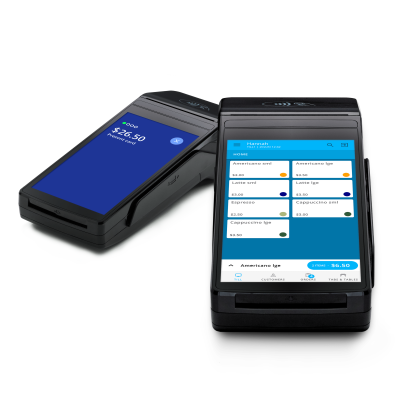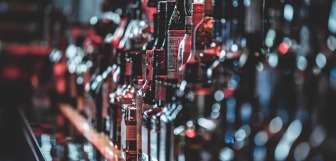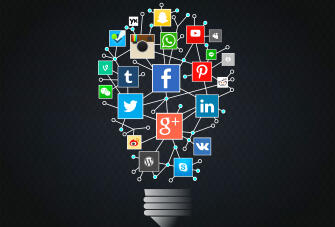Liquor Pricing: The Ultimate Guide
It's no secret that most bars and restaurants make a large amount of their money from selling alcohol. Alcohol is so integral to any bar or restaurant's cash flow of most that anyone wanting to run such an establishment needs to get their drink prices right.
But it can be tough to know how to go with your liquor pricing. Pricing liquor, after all, is tricky. If you price liquor too high, you may alienate your customers. But if you price liquor too low, you're missing out on a massive profit margin. So, it's important to find that sweet spot. You could even think of pricing your liquor well as the ultimate form of bar etiquette.
In this blog, we'll take you through the in and outs of liquor prices to make the most out of your stock.
The pricing of your liquor in practice
There can be a lot of things that go into how you set your drink prices. There are factors to consider like pour costs, garish costs, shrinkage costs, beverage cost, drink cost, beverage costs, and more.
What is liquor margin?
One of the most important things you need to keep in mind when you price drinks is your liquor margin. This is what will ultimately make or break whether your liquor pricing is profitable.
Your liquor margin is calculated by taking your liquor cost and dividing it by your retail price. For example, if a bottle of liquor costs you $20 and you sell it for $40, your liquor margin would be 50%.
Ideally, you want your liquor margin to be between 25-30%. This will ensure that you're making a good profit on your liquor sales without overcharging your customers.
There are a few ways to increase your liquor margin. One is to simply increase the price of your liquor. But this isn't always the best option as it could lead to customers going to your competitors.
Another way to increase your liquor margin is to reduce your liquor cost. You can do this by negotiating better prices with your suppliers or by cutting down on wastage.
Of course, you can also try to do a combination of both increasing your prices and reducing your liquor cost.
The bottom line when pricing liquor is that you need to find a pricing strategy that works for your business. There is no one-size-fits-all solution when it comes to liquor pricing. But by taking into account your liquor cost, liquor margin, profit margin, and customer base, you can come up with some great ideas for liquor pricing.
What is pour cost?
Pour cost is the amount of liquor that is wasted due to spillage, over-pouring, and other factors.
It's important to keep your target pour cost in mind when pricing your liquor as it will eat into your profits if it's too high.
There are a few ways to reduce your average pour cost. One way to reduce your pour cost is to train your bartenders to pour accurately. Another is to use liquor pourers which help to control the amount of liquor that is poured.
You'll also want to master your pour cost percentage. Pour cost percentage is the pour cost as a percentage of the retail price.
For example, if a bottle of liquor costs you $20 and you sell it for $40, your pour cost percentage would be 10%.
Ideally, you want your pour cost percentage to be between 4-6%. This will ensure that you're not losing too much money to pour cost.
What is glassware cost?
Glassware cost is the cost of the glasses, bottles, and other containers that you use to serve your liquor. This cost can add up, especially if you or your staff experience a lot of breakage, so it's important to keep it in mind when pricing your liquor.
What is shrinkage cost?
Shrinkage cost is the cost of liquor that is lost due to evaporation, spillage, and theft. This is a major cost that you need to take into account when setting your drink prices.
There are a few ways to reduce your shrinkage cost. One is to keep a close eye on your liquor inventory - like kegs, wine bottles, and spirits bottles - and make sure that you're not overstocking. Another is to train your staff on proper liquor handling.
What is garnish cost?
Garnish cost is the cost of the fruits, vegetables, and other garnishes that you use to decorate your liquor drinks. This cost can add up, so it's important to keep it in mind when pricing your liquor.
What is labor cost?
Labor cost is the cost of the wages that you pay your bartenders and other staff.
There are a few ways to reduce your labor cost. One is to use automation, such as liquor dispensers, to pour liquor drinks. Another is to train your staff on liquor pouring so that they can make drinks quickly and efficiently.

Discover what’s possible with the Epos Now Pro range
Take your restaurant to the next level with Epos Now's suite of powerful card machines.
- Send orders directly to your kitchen
Pass orders directly to your kitchen to improve order output times and accuracy.
- Manage tables
Track time-at-table and manage floor plans in real-time to boost table turnover.
- Simple product management
Add and amend individual products, or make changes in bulk that appear instantly.
How to price beer
Now that you know the basics of how to price your liquor, let's take a look at how to price beer. Beer is a bit different from liquor in that it has a lower alcohol content and is often sold by the pint. You can also sell bottled beer.
The first thing you need to do when pricing beer is to calculate your beer cost. This is the cost of the beer itself, plus any taxes and fees. Once you have your beer cost, you can calculate your beer margin.
Ideally, you want your beer margin to be between 20-30%. This will ensure that you're making a good profit on your beer sales without overcharging your customers.
There are a few ways to increase your beer margin. One is to simply increase the price of your beer. But this isn't always the best option as it could lead to customers going to your competitors.
Another way to increase your beer margin is to reduce your beer cost. You can do this by negotiating better prices with your suppliers or by cutting down on wastage.
Of course, you can also try to do a combination of both increasing your prices and reducing your beer cost.
If you want to devote your business purely to beer, you may want to research different bar concepts and how to open a bar. Check out our blogs on how to open a sports bar, what is a dive bar, and how to open a hookah lounge. You may also want to weigh up bars vs pubs in case you prefer one over the other.
How to price wine
Wine is an alcoholic beverage that is can be sold by glass or by bottle.
When it comes to pricing wine bottles, you need to take into account your wine cost, wine margin, and customer base.
Ideally, you want your wine margin to be between 30-40%. This will ensure that you're making a good profit on your wine sales without overcharging your customers.
There are a few ways to increase your wine margin. One is to simply increase the price of your wine. But this isn't always the best option as it could lead to customers going to your competitors.
Another way to increase your wine margin is to reduce your wine cost. You can do this by negotiating better prices with your suppliers or by cutting down on wastage.
Of course, you can also try to do a combination of both increasing your prices and reducing your wine cost.
If you have a good relationship with your customers, you could also try to increase your wine prices without them noticing. This can be done by adding a small surcharge to your wine prices or by charging for wine tastings.
If you're looking to go full into selling wine, check out our blog on how to open a wine bar.
How to price spirits
Spirits are usually sold by the glass and are often more expensive per unit than beer and wine.
When it comes to pricing spirits, you need to take into account your spirit cost, spirit margin, and customer base.
Ideally, you want your spirit margin to be between 40-50%. This will ensure that you're making a good profit on your spirit sales without overcharging your customers.
There are a few ways to increase your spirit margin. One is to simply increase the price of your spirits. Another way to increase your spirit margin is to reduce your spirit cost. You can do this by negotiating better prices with your suppliers or by cutting down on wastage.
How to price cocktails
Cocktails are usually made with a mix of liquor, wine, and/or beer, so their pricing can be a bit more complicated.
Ideally, you want your cocktail margin to be between 50-60%. There are a few ways to increase your cocktail margin. One is to simply increase the price of your cocktails. Another way to increase your cocktail margin is to reduce your cocktail cost. You can do this by experimenting with different ingredients and suppliers to find the right balance. For example, you may want to swap out a particular brand of spirits for others in order to brink the total cost of each cocktail down.
For more information on bartending, see our blog on how to become a bartender.
Final thoughts
Controlling costs, especially when you're trying to boost alcohol sales, can be incredibly tricky for all bar owners. In order to make sure you price drinks correctly and rake in the dough, you need to make sure you're using the right tools.
No tool lets you do this better than Epos Now's liquor store POS or bar POS system. With this state-of-the-art point of sale, you'll be able to take control of your business like never before, and control your drink price to boot.
-
View real-time business data from any internet-connected device, wherever you are
-
Leverage mobile ordering software to provide convenient at-table service
-
Use leading bar management software to track sales, stock, and margin data to get greater visibility
-
Connect to over 100 smart business tools to boost efficiency and automate manual tasks
Want to learn more about our offer? Get in touch below!




